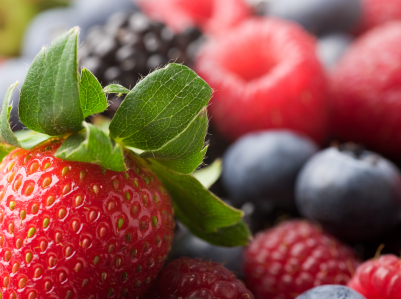
When you’ve carried out the 2-week experiment you will have experienced and felt some of the effects excellent eating provides. At this point you’re likely motivated to continue your journey towards healthy eating. This section will provide four recommendations for how you can continue to improve how you feel, look and perform through how you eat:
- Try different foods and pay close attention to how you feel
- Start eating super-foods to boost your health, and how you feel, look, and perform even more
- Use the 80/20 rule to healthy eating
- Supplement with vitamin D3 and omega-3 if you don’t get much sun or eat fatty fish
First, however, you need to re-evaluate how you feel to see how much of an improvement you’ve already made and to subsequently decide on what next steps to take.
In case you haven’t already read the other posts in this series do check out the links below:
- Introduction to the 2-week experiment: Why you should do it and its process
- Step #1: Evaluate how you’re currently doing
- Step #2: What and how to eat during the experiment and how to avoid possible adverse effects
- Step #3: How to successfully carry out the experiment
Re-evaluate how you feel and decide on next steps
You evaluated how you felt before starting the 2-week eating experiment. Now it’s time to re-evaluate and see how much you have already improved. In the evening of the 14th eating experiment day, evaluate how you’ve felt the last 2-3 days. Use the same criteria as before. Also, write down other things you feel have changed since you started the experiment.
Re-evaluate how you feel based on the same criteria as before
Please see the step 1 post for the evaluation form and how to carry out the evaluation. Also remember to write down any other changes you’ve experienced.
Analyze your before and after scores
Compare the results from the self-evaluation you did before starting the 2-week eating experiment with the scores you achieved above.
Most people will see a substantial improvement in their evaluation score. However, if you are one of the few that don’t see an improvement keep in mind that the degree to which you feel better depends on not only what you eat but also:
- Your genetics and how you have lived your life so far (epigenetics).
- Your age
- Diseases, food allergies, food intolerances and foods sensitivities you have
- The type and amount of bacteria & parasites in your body
- Lifestyle factors such as your level of physical activity, sleep quantity, sleep quality, stress levels, your belief that the experiment will be a success, the amount of positive things in your life, the quality of your relationships etc.
Decide on next steps
If you feel substantially better after the two weeks then good for you! All you need to do now is to start optimizing your diet. Just skip ahead to the next section!
However, if you are one of the unfortunate few whom only see a small or no improvement here’s what I recommend you do:
- Continue the experiment for two more weeks and re-evaluate how you feel. Some people need more time to adapt and you might be one of them.
- If you still don’t feel substantial improvements go and test yourself for food sensitivities & allergies. Lactose, casein or gluten sensitivity are three big ones but you can also have issues with a number of other foods. If you have any sensitivities, intolerances or allergies remove the relevant foods completely from the 2-week eating experiment and carry out the experiment again
- If the above doesn’t help you either I recommend visiting your doctor and to check if you have digestion issues like leaky gut or a number of other digestion related syndromes & diseases.
- If the above isn’t the issue then try to do a less hardcore version of the 2-week experiment where you eat some carbohydrates from sources such as berries, fruit, sweet potato, rice, taro, yams, potato. Pay close attention to how you feel after eating these carbohydrate foods. Eat the ones that have no negative impact on your digestion and how you feel.
- If the above neither is of any help to you I recommend looking at other lifestyle issues. Try to get more sleep, improve your sleep quality and further reduce stress in your life. Try doing strength exercises at least twice a week (we will get back to how to do high-intensity strength training in a future post).
In case you’ve not yet started the experiment and the above five points worry you: I have yet to help anybody who didn’t feel the positive effects of the experiment after a maximum of four weeks. Nearly everyone I’ve helped feel better after two and that’s what I think will happen to you too. Just do it!
Optimize your diet
Now that you’ve started to feel the powerful effects healthy eating has on you it’s time to start optimizing your diet. Optimize for what you ask? I personally believe optimizing for being as healthy as possible and simultaneously for enjoying our lives as much as possible is the way to go.
For such an optimization I recommend four actions:
- Try different foods and pay close attention to how you feel
- Start eating super-foods
- Use the 80/20 rule to healthy eating
- Supplement with vitamin D3 and omega-3 if you don’t get much sun or eat fatty fish
Try different foods and pay close attention to how you feel
Having successfully completed the experiment it’s great to start optimizing you diet by identifying how you respond to different types of food. This means that you will not only try to eat foods from the 2-week experiment but you will check out other foods as well. The aim is to over time understand how you respond to different foods so that you can create a way of eating that suits you optimally.
Optimizing your diet is important as foods affect all of us differently. We all have different genes, different life experiences and different lives. The variety in terms of our tolerance to food is massive. Consequently, foods that are highly beneficial for some people (milk products for example) are terrible for others (those who are lactose or casein intolerant for example). The only way to know for sure what foods work well for you is through trial & error. This is also the method used by experts in the field of nutrition. Peter Attia, Stephan Guyunet, Chris Kresser, Paul Jaminet, Mark Sisson, Robb Wolf, Gary Taubes, Ben Greenfield, Andreas Eenfeldt, Jimmy Moore and many others who have researched health for years still experiment in order to hit the sweet spot between eating the delicious foods they love and optimal health. Personally I’m constantly experimenting and I really enjoy it. With some practice you will too.
At this point it’s important for me to emphasize that there are some foods that you, in my humble opinion and backed by lots of quality research, should avoid as much as possible:
- Processed foods: Due to the poor quality of food, little minerals, few vitamins, potentially dangerous food additives, high omega-6 content, high sugar content and more. Generally the more processed food is the worse it is for you however there exist exceptions to this rule as with any rule
- Sugar: As tons of research is demonstrating that refined sugars have all kinds of negative effects on our physical and mental health. Keep in mind that unrefined sugars such as sugars in fruit, berries, and raw honey for example are different.
- Margarine, vegetable & seed oils and trans fats: To reduce the amount of omega-6 in our bodies and generally because research show that this stuff is making us inflamed and sick
I’m not saying you should never eat such foods; that’s why you have the 80/20 rule (see below). However, I would never recommend that anybody includes foods that contain the above in their day-to-day lives (the 80%). These foods are found to age you and make you sick and neither of those are particularly beneficial to your life.
Having said that, let’s look at the process of self-experimenting with foods.
Re-introduce a food item over a period of 2-3 days and pay attention how you feel
This is how you go about the trial & error process of food self-experimentation:
1. Introduce a food without changing anything else about your diet
This means continue eating as you did during the 2-week eating experiment but add this one food. Use this food in one or more of your meals for at least 48 -72 hours (the exact amount depends on the individual). Only re-introduce one food at the time!
2. Pay close attention to any changes in your body and how you feel
Use the evaluation form to guide you in this process but remember to pay attention to other factors that you deem relevant too. Check this post for the evaluation form.
If you feel worse after 2-3 days than you did before there can be at least three reasons why:
- Your body doesn’t respond optimally to the food you re-introduced
- You ate more of the food you re-introduced than what is optimal for your body
- There’s something else in your life that is causing the negative effects and not the food that you re-introduced
If you feel fine or even better after 2-3 days than you did before there can be at least two reasons why:
- Your body responds well to the food you re-introduced and the quantity you ate of it
- There’s something else in your life that is causing the positive effects and not the food that you re-introduced
3. Continue self-experimenting until you’re confident
Due to there being several reasons to how you feel after re-introducing a food I recommend you go slow and take your time so that you can be confident about the self-experimentation results. One way to increase your confidence in a particular food you’re experimenting with is to stop eating that food for a few days after re-introducing it and see how that makes you feel. After 2-3 days, re-introduce the food again and pay attention to what happens.
Over time you will learn a lot about your body. Use the evaluation form; even add more items to it if you should need to and makes notes about what you learn. After just one month you’ll have learnt loads of stuff about yourself that you never knew before!
Practical advice: Start re-introducing foods you enjoy that are also generally “safe”
I recommend that you start re-introducing foods you enjoy that for most people doesn’t do much harm. The following foods, if you like them of course, are great for adding some more carbohydrate back into your diet:
- sweet potatoes
- white potatoes
- yams
- taro
- white rice
Adding back some carbohydrates to your diet is important in your quest for your optimal way of eating. Some people thrive in ketosis, meaning eating very little carbohydrates (less than 50 grams pr. day), whilst other people do best when they eat at least some carbs (generally 50-150 grams pr. day).
Next you might want to add back a glass of wine into your diet, a beer ever now and then, some delicious dark chocolate, some more fruits & nuts etc. I have no idea what you like and I also have no idea what your goals are. On a general basis however: If you want to reduce the amount of fat you have on your body, do not eat too many carbohydrates (there exist exceptions to this rule too as it does to every nearly every nutrition rule!).
Start eating super-foods to boost your health and how you feel, look and perform even more
I have yet to address the importance of vitamins and minerals in my blog and I will make a future post about this crucial topic. However, I’ll give you a preview right away: vitamins & minerals are crucial for our short and long-term health. Unfortunately, most of us are deficient in almost all of these essential nutrients. That sucks for us.
Below I have listed some of my favorite health foods. I’m not saying I love the taste of all of these as much as I love cream and berries, however they are superb health foods. Most of them contain loads of minerals & vitamins and some contain probiotics (bacteria) that are important for our guts. Eating these foods is likely to improve your health and greatly reduce the need for using supplements. Here’s the list:
- Organ meats, especially liver: Liver is arguably the most nutritious food that exists that’s commonly available to most people. It’s packed with minerals & vitamins. Go and eat!
- Bone broth: Great for your bones and much more. Bone broth is basically homemade bullion made from cooking bones for a long time.
- Raw dairy: An excellent source of nutrients which unfortunately is very hard to find in many countries including my own, Norway. What you have to do is to visit farms directly and buy from there. I have to admit I have yet to do this myself but it’s on my to-do list.
- Fresh and local fruit & vegetables: These frequently contain more vitamins and minerals than “normal” fruit & vegetables
- Sprouted & fermented foods: These foods contain probiotics and are helpful for your body in a number of ways. Check out this link if you want to learn more about sprouting and this link for fermentation details.
Eat these foods with a smile on your face; they are superb for you.
Use the 80/20 rule to healthy eating
In order to reduce negative emotions we have to stop listening to extreme statements about what we can and cannot eat. The people who tell us we should never eat pizza/pasta/ice cream etc. are clueless. Eating foods such as the above every now and then isn’t going to do us much harm, quite the opposite [1]. If we feel great about being able to eat pizza/pasta/ice cream every now and then, that in itself is important to our health (even though these foods are generally not part of a healthy diet). There is more to health than nutrition and having enjoyment in life is a great example of that. Unfortunately, most nutritional experts tend to focus on nutrition only and thereby discouraging people from making positive change.
I strongly recommend using the 80/20 rule with regards to eating. Implement good eating habits 80% of the time and thoroughly enjoy it when you decide to eat something that might not be optimal nutritionally (that’s the 20%). Personally, I eat more like a 90/10. However, the important thing isn’t the exact ratio but the fact that you install good habits and then sometimes allow yourself more freedom. Your way of eating must be stress free and have room for “sinful” treats!
Supplement with vitamin D and omega-3 if you don’t get much sun or eat fatty fish
First a warning: I have researched supplements for a while but I do not feel that I’m in a position to make strong, holistic recommendations in this area yet. The world of supplements is highly complex and the research is all over the place. Some experts recommend taking all kinds of supplements, others argue you shouldn’t take any. I honestly don’t know whom and what to trust at the moment. Having said that, there are two supplements I presently believe are important to many of us: Vitamin D and Omega-3 fatty acids.
Vitamin D
Vitamin D is important for a massive amount of bodily functions and most of us are deficient. Luckily being out in the sunshine for 10-60 minutes (depending on the individual), without sunscreen, several times a week gives us the vitamin D we require (about 10 000-20 000 IU of vitamin D in 30 minutes). However, nearly all of us who live in areas that don’t have that much sun, especially not in the winter, will be deficient in Vitamin D. For this reason I recommend supplementing with Vitamin D when you don’t have access to much sun. I’m not sure exactly how much to supplement with as it depends on a number of individual factors and the research isn’t conclusive either, however taking 2,000 – 5,000 IU pr. day in liquid form has found to be effective for most people. Make sure you get the D3 type of the vitamin. I don’t have the knowledge necessary to recommend a specific brand, yet.
Omega-3
Our bodies prefer a ratio of omega-6 to omega-3 in the region of 2:1 to 1:1. Currently, most of us eat a diet with a ratio way higher than this. There are two ways of reducing any ratio; either by reducing the numerator or increasing the denominator. As you’ve read throughout this series I believe we should reduce the amount of omega-6 we eat. Additionally, I recommend increasing the amount of omega-3 we consume. Personally, I get my omega-3s from salmon, mackerel and other fatty fish and I strongly recommend this approach. However, if you’re really not a fish person (my sister for example claim to be allergic to “anything from the sea”…..) I recommend supplementing with fish-oil. A table-spoon a day is generally sufficient. As with the vitamin D I don’t have the knowledge necessary to recommend a specific brand.
Summary
We did it! The 4-step eating experiment series is done. It’s been a great ride! Let me summarize this last step for you:
Re-evaluate how you feel and decide on next steps
- Re-evaluate how you feel based on the same criteria as before
- Analyze your before and after scores
- Decide on next steps
- If you feel better: Start optimizing your diet
- If you don’t feel better: Continue the experiment for two more weeks, test for food sensitivities, eat some more carbohydrates, address other lifestyle issues and visit your doctor
Optimize your diet
- Try different foods and pay close attention to how you feel
- Start eating super-foods
- Use the 80/20 rule to healthy eating
- Supplement with vitamin D3 and omega-3 if you don’t get much sun or eat fatty fish
Acknowledgements & recommended resources
For this post I’d like to again mention Andreas Eenfeldt from Karlstad, Sweden. As many of you know Sweden is one of the most health-conscious countries in the world. What you might not know is that Andreas is one of very few people who have been able to make a significant impact of what Swedes eat.
I was fortunate enough to meet Andreas two weeks ago and we had a great time. Andreas is someone who is genuinely interested in making a positive change in the world and he’s trying to do so through his clinical practice and excellent website www.dietdoctor.com (www.kostdoktorn.se for my Scandinavian readers). If you want to further your understanding of nutrition I especially recommend that you check out his many video interviews. Andreas has invested heavily in these interviews in order to provide the lay-man with top quality video content to further their reading and I enjoy them.
For this post I borrowed the following pictures:
– Berries
– Cheese
– Avocado
– Salad
– Smoothie
– Salmon
[1] The exception here is of course people with food allergies, intolerances or sensitivities.

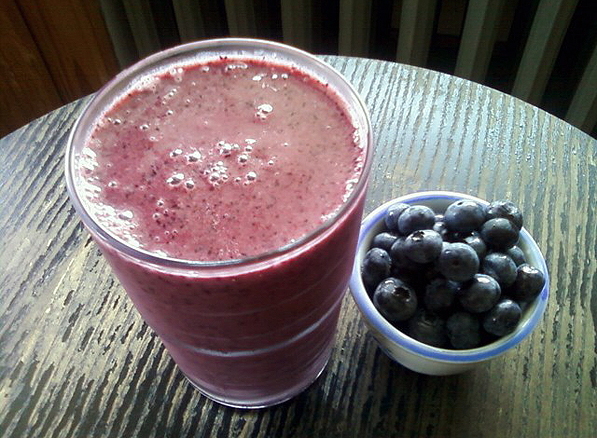
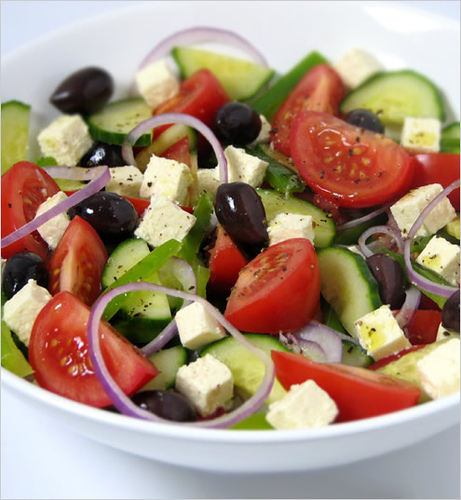
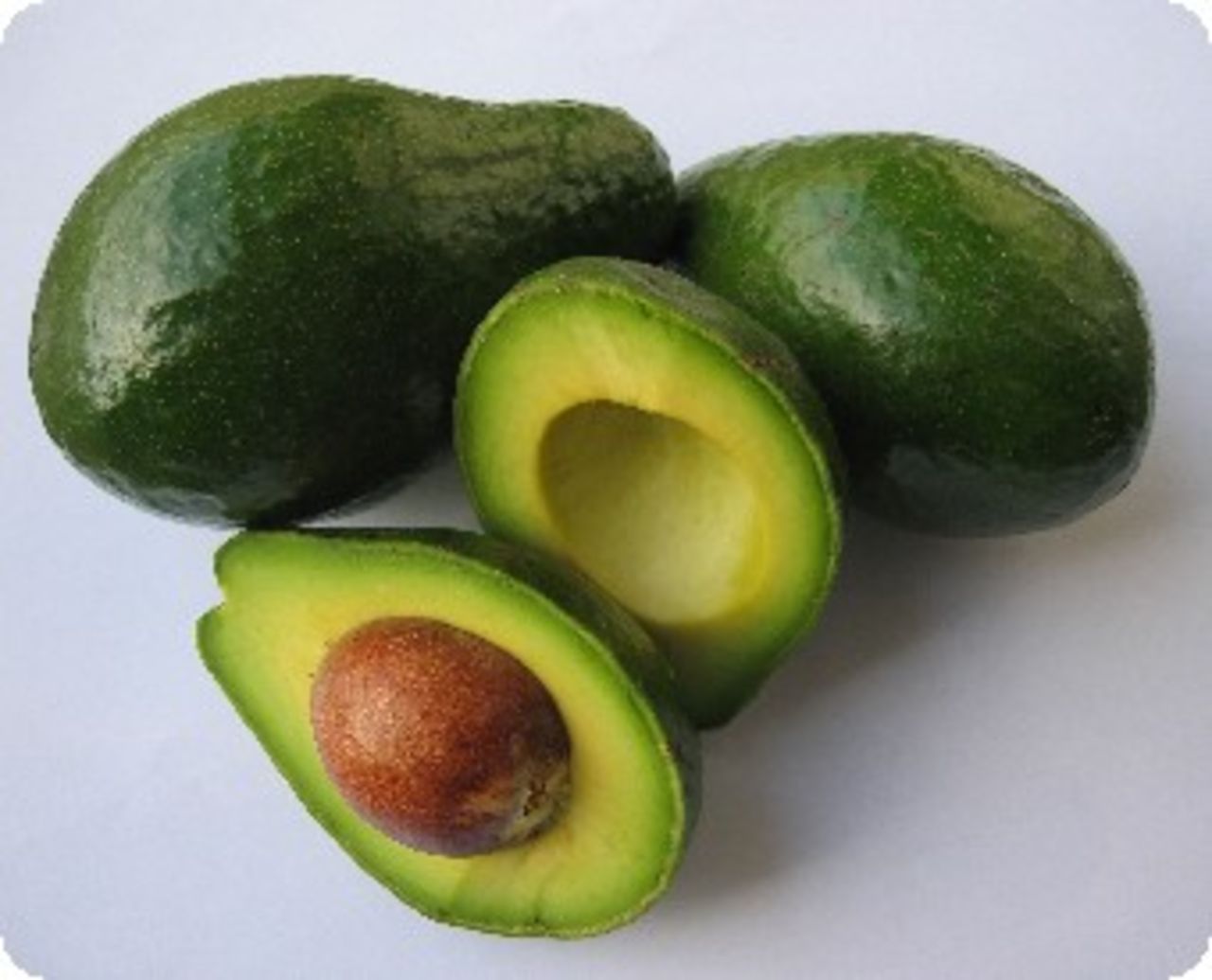
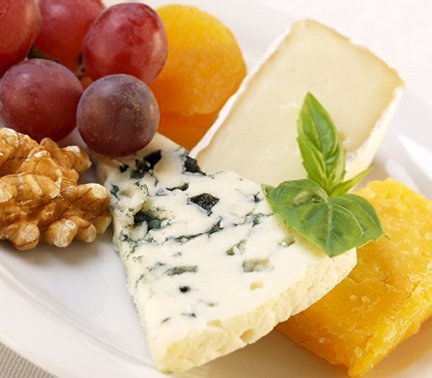


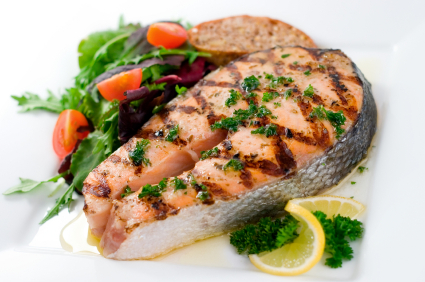
Thank you for another excellent article. Where else could anybody get that type of info in such an ideal manner of writing? I’ve a presentation subsequent week, and I am on the look for such info.
really i like it also ……..
Thank you. This kind of information is mainly available in the research litterature, health books and blogs. I recommend that you check out the excellent people I acknowledge at the end of every one of my posts.
Hi! Thanks for some great tips on what to eat:) What would you say is your top ten “superfoods” favorites? In this post you mention some categories and it would be very interesting to get some tips on spesific products:)
I’ve done the two weeks and continued on to 6 weeks. Here are my results:
1. Sugar and grain cravings disappeared after three days.
2. Hunger transformed from desperation to sane. I’m hardly ever hungry, and when I am, I have no trouble choosing good, healthy low carb according to the plan.
3. I feel very good.
4. I love the food.
5. I’VE GAINED 8 lbs in 6 weeks of low carb high fat eating.
I’m female, 5’3″, now 193 lbs, 58 years old, in very good shape, get exercise 4+ days weekly (walking 30-40 minutes on exercise days, play racquetball for fun).
Using portion control and low fat eating, I went from 235lbs to 170lbs in a year and a half, and kept it off easily. I needed to lose 20 lbs more but couldn’t seem to drop any more, plus, I found myself hungry all the time if I decreased my calories, which were at 1400 daily. I began putting on weight after my mom died in July, and ended up at 185, but it stayed constant from then on.
I decided to try low carb high fat because it all makes sense to me, and I want to continue because I like feeling free from food cravings.
Here’s my typical daily food intake:
Morning – 1 – 2 scrambled eggs with cheddar cheese, fried in coconut oil, sprinkled with 1 tbsp fresh ground flaxseed; 1 – 2 pieces of bacon, coffee with 2 tbls 40% butterfat heavy whip cream.
Snack – coffee with 2 tbls 40% butterfat heavy whip cream. Sometimes an ounce or two of cheese, or leftover meat or fish.
Lunch – 3 cups salad that includes lettuce, spinach, bell pepper, tomatoes, cucumber, 5 olives, 2 tbsp olive oil and 1 tbsp apple cider vinegar. 2 – 3 oz of beef or chicken or fish, all fatty and with skin, broccoli or zucchini with butter, and sometimes include mashed cauliflower with lots of butter.
Dessert (either at lunch or dinner but not both) – 1/16 slice of homemade low carb pumpkin cheesecake (ingredients are cream cheese, sour cream, pecan crust, 100% pure Sucralose for sweetener. 4 tbsp of whipped heavy cream) comes to 4 carbs per slice.
Dinner – 2 egg omelet with fresh sautéed onions, mushrooms, bell pepper, tomatoes; fresh broccoli or zucchini with lots of butter.
Daily carb count came to between 25 – 40.
Daily calorie count came to between 1750 – 2500.
This was during the holiday season, and I had no problem keeping to the plan. No sweets even tempted me.
WHY AM I GAINING WEIGHT ON THIS PLAN OF EATING?
Thanks for any feedback.
Casey,
Thanks for your excellent post and congratulations on your progress :)
I understand you’re happy with the new way of eating but concerned you’re no longer losing weight. I understand both your happiness and concern. There’s definitely a fee things you can try to boost the fat loss, however before we get into that I’d like to start by saying: There’s a huge variety in how different people react to different foods and how long they need to fully adapt to the new way of eating. Additionally, life-style factors as stress, having a positive self-view, sleep, toxins, food intolerances/allergies, gut-issues etc play a big part in weight-loss. Here are some general weight loss tips for you Casey: – Aim for 7,5-9 hours of sleep and reduce your stress levels – Reduce or preferably remove the Splenda. None of the people I coach personally use artificial sweeteners and I’d try my best to get rid of this habit. Worst case replace Splenda with Stevia but I do recommend that you cut back on sweeteners – Start eating super-foods such as liver, bone marrow and fermented foods – Two days a week, do intermittent fasting where you don’t eat breakfast and only eat food during an eight hour period for example from 12-20. – Accept that having eaten differently for 50 years your body will perhaps need more time to become an excellent fat burner. I’ve seen a 62 year old only fully adapting after 4 full months. Even though it very much depends on the individual the older you are the longer you need to fully adapt. – Listen to your body. After eating what foods do you feel best/less good?
That’s what I have for you at this point and remember: I don’t know your specific situation in detail so I’m working with what I’ve got here.
What do you think Casey and do you have any other thoughts yourself?
Good luck! :) You’re doing really well.
Bjarte
Thank you so much for your response. You hit the nail on the head with at least two things:
1) Sleep. I get to bed late and get up early, so I rarely get 7 hours consistent sleep more than 1 or 2 nights per week. I will work on doing better with that.
2) Stress. I recently accidentally ended up starting a new business. A few years ago I invented a product for my own needs, and due to friends needing the same thing, I now manufacture and sell it full time. Several stressful elements of it all: a) We’ve been living on the edge financially while we’ve been building our business at home, b) Sales have quadrupled this year and we are getting media publicity, as well as endorsements from well-known products, c) Success is looking to be imminent, and soon!, which means fast and furious work in a field I know almost nothing about (business). All of this equals STRESS, even though it’s good stress. To be honest, I’m somewhat terrified. If you go to http://www.meowspace.biz you’ll see what we’re doing.
I have a healthy self-image and an immensely happy life with excellent relationships, and I am not aware of any food allergies that would affect my weight loss. Nothing affected it during the time I lost over 50 lbs, so I can’t imagine eating low carb would change that. Or would it?
Regarding the Sucralose…
I have a huge sweet tooth, and in the time I was on low fat eating, I was able to keep away from sugar by using Splenda. It didn’t seem to hold back my weight loss at all. Recently I stopped using Splenda, which has carbs and fillers, by ordering 100% pure Sucralose powder (the stuff Splenda is made from), which I use with water to make my own pure liquid Sucralose. No carbs, no fillers, and I use very little now since my sweet tooth is less than it used to be (thanks to low carb). I get a lot of pleasure from my daily coffee, and from the low carb dessert I enjoy. I fear that if I completely stop using the Sucralose I’ll want to go back to the low fat, fruits and whole grains way of eating. That will put me right back on the road of craving and unnatural hunger. So, I guess what I’m saying is that I’m afraid to give up the Sucralose for fear that I’ll go back to sugar. If you have any suggestions I’m open to hearing them.
I’m going to get more sleep, and use my stress reducing techniques daily, and see if that doesn’t make a difference. Thanks again!
Casey, Interesting stuff. Good luck with your business! Keep in mind that not many things in life are worth stressing for. You might want to consider meditation; just 5-10 minutes a day. I also feel your worries with regards to doing without the artificial sweeteners for a while. Do check out Stevia if you absolutely need the sweet stuff though.
Let us know how you get on.
Bjarte
Casey, one question: How often do you have bowel movements and how would you describe its contents (very hard, hard, medium, soft, a little too soft, very soft, liquid etc)?
Daily, medium.
Great, and do you know roughly how many grams of protein you’re eating pr. day? We want to make sure that your body isn’t converting excess protein to glucose through gluconeogenesis.
Between 50-110. Usually around 80.
Checking in…
Still eating low carb high fat according to the plan. I’ve eliminated the regular low-carb desserts, and I no longer use whipping cream in my coffee. I do use whipping cream on occasion in recipes. But the fact that I don’t crave it anymore is a really good thing.
My weight seems to be stable at an average of 189 every morning. I don’t gain, but I don’t lose. My calories are more like 1600 every day.
This morning, I’ve had a cup of coffee with my 100% sucralose, but I’m using Trader Joe’s organic soy milk creamer, which I like even better than cream, and I’m happy with it. I still love eating this way, but I admit to being ambivalent about whether I should go back to the whole grains, fruits, and vegetables, that I ate which helped me to lose the initial 50 pounds. In fact, the only thing that stops me, is when I remember that throughout that time, I still had cravings that led me to go through times of allowing myself to each sugar. It was very hard to stop after those times, so there was always a bit of a struggle in that year and a half. Still, I always managed to get back on track. It wasn’t until my mom died, and I began gaining weight back, that I decided to try low carb. I think my limit to staying on low-carb would be if I ended up weighing, at any time, over 193. At that point, I would reluctantly go back to the whole foods, grains, fruits, and vegetables. I like that way of eating as well, albeit, with unwanted sugar cravings.
Any other ideas are welcome. I hope my ongoing journal here is helping others, and helping you in helping others.
Casey, good work. I’m glad to see your weight has stabilized. Here are a few more tips: Go back and read “Step 2” of my eating experiment, Seeing that you drink Soy Milk I worry that you eat other stuff I won’t recommend too. Also, remember that your body is going through a massive change when you’ve changed your eating. The older we are the longer our bodies typically need to adjust. Stay with this, it’ll only get better.
Do check out this article by one of my favorite people in the health world: Chris Kresser where he outlines typical low-carb issues: http://chriskresser.com/paleo-diet-challenges-solutions-part-1